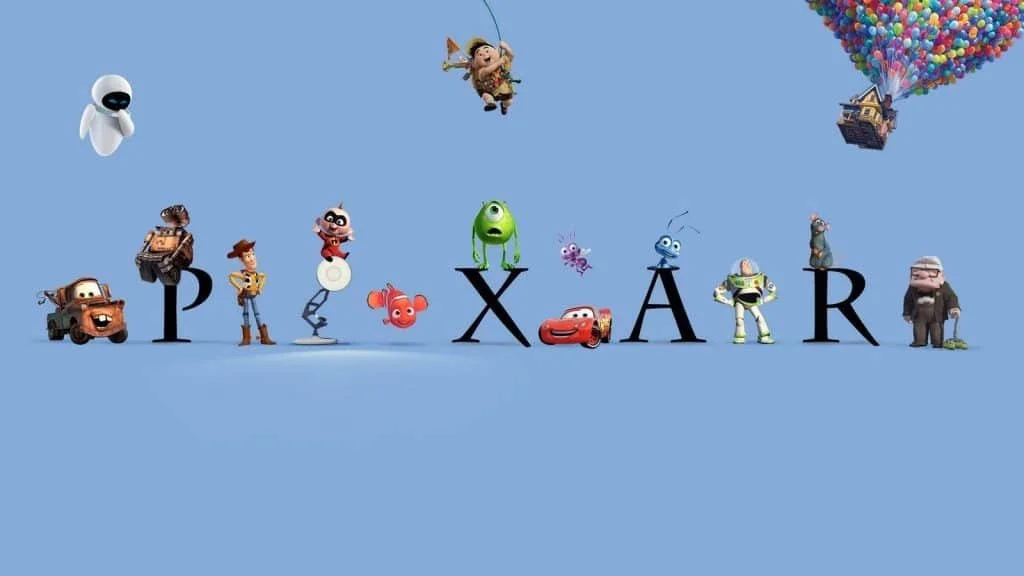Tin Toy (1988)
Toy Story.
Monsters, Inc.
A Bug’s Life.
Finding Nemo.
Up.
The Incredibles.
WALL-E.
Ratatouille.
Some of Pixar’s best-loved characters.
What if I told you that if it weren’t for Steve Jobs and a $300,000 risk, those movies may never have even been conceived, let alone seen the light of day?
Today we’re talking about Tin Toy (1988), a five-minute Pixar short about a one-man-band toy being terrorized by a human baby. Added to the National Film Registry in 2003 (a mere five years after it first became eligible), Tin Toy was released only seven years before Toy Story (1995), and that was no accident. The history of Tin Toy begins in the mid-eighties.
Steve Jobs (yes, that Steve Jobs) purchased Pixar in 1986, a time when the company’s animation department was primarily being used as a tool to market and promote Pixar’s technology rather than to produce entertainment. John Lasseter (an animator from Disney) was in charge of producing these short films, including Luxo, Jr. (1986) and Red’s Dream (1987) (about a lamp—specifically, the lamp that would become the famous Pixar Lamp—and a bicycle, respectively), and his job was under fire. Pixar was bleeding money, kept alive only because of Steve Jobs’ generosity.
So when Lasseter pitched a story about a little tin toy running away from an out-of-control baby, there was no indication that there would be a return on investment. Jobs was skeptical about the project, which would cost approximately another $300,000 for five minutes of animation. Ultimately, however, Lasseter’s passion won him over. He came prepared with storyboards that persuaded Jobs to loosen the purse strings. According to Walter Isaacson, Jobs’ authorized biographer, Jobs told Lasseter, “All I ask of you, John, is to make it great.”
Jeez, no pressure, Steve.
Officially billed as a way to test Pixar’s software, the task of animating Billy (the groundbreaking yet disturbing baby in the film) posed multiple challenges to the Pixar animation team, and the finished product did not quite live up to the animators’ vision: his movements are a little clunky, his skin is reminiscent of a waxwork, and his face is, frankly, slightly horrifying. Sacrifices had to be made to optimize the use of Jobs’ investment, and despite the freaky uncanny valley that manifests itself when Billy is on screen, the storytelling and the quality of the other animated characters won out.
Flash forward to the 1988 SIGGRAPH convention (an annual computer graphics conference), where Tin Toy premiered to raucous applause. Flash forward another few months, and Tin Toy made it to the Oscars, where it became the first Pixar film and the first film using CGI to win an Academy Award (specifically, the Academy Award for Best Animated Short Film). Tin Toy even caught the eye of that little film studio known as Disney, which made a deal with Pixar to expand on Tin Toy and create the film that would eventually become the first in the Toy Story franchise. I encourage you to take a look at Tin Toy and then watch Toy Story. What a difference seven years can make!
Woody the Cowboy and Buzz Lightyear from Toy Story (1995).
It’s not hyperbole to say that Tin Toy helped save Pixar and transform it into the mega-successful studio it is today. Pixar began in the 1970s as a small department in Lucasfilm’s computer program, where it was unrecognizable compared to what it is today. So whether you’re rewatching Toy Story or checking out Elio, Pixar’s newest feature film, remember the little tin toy that made it all possible.
Camille





